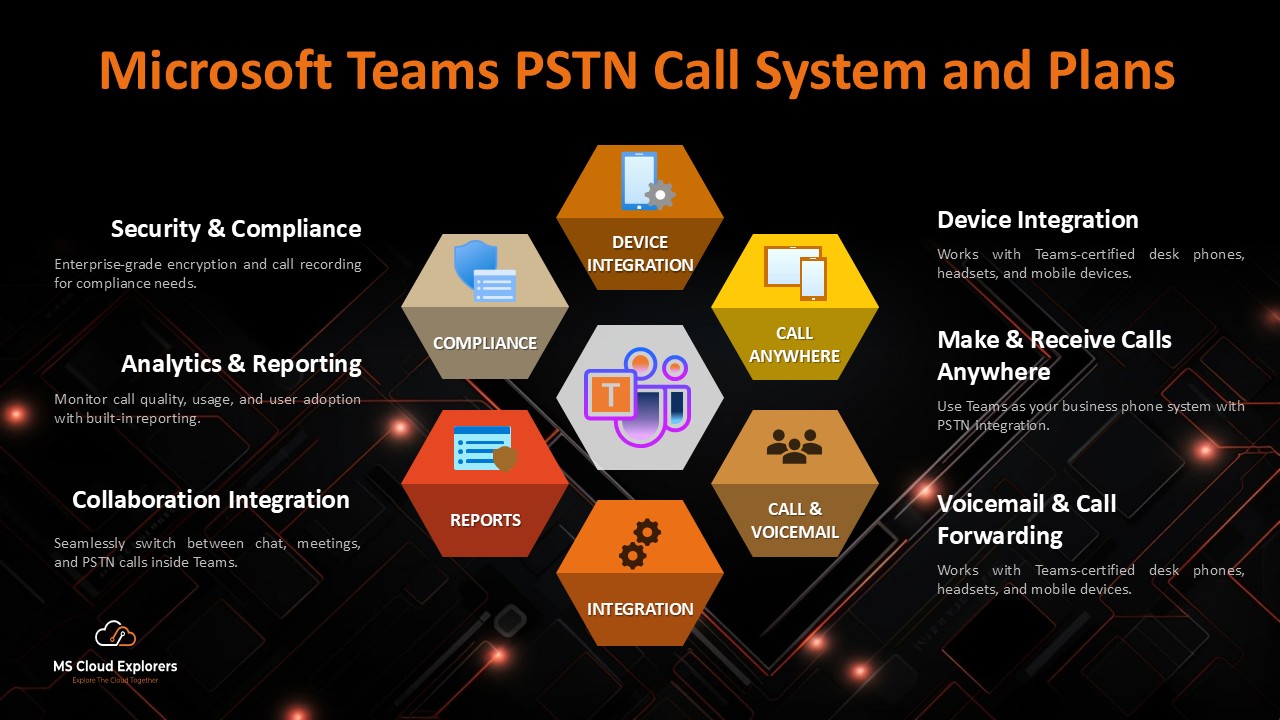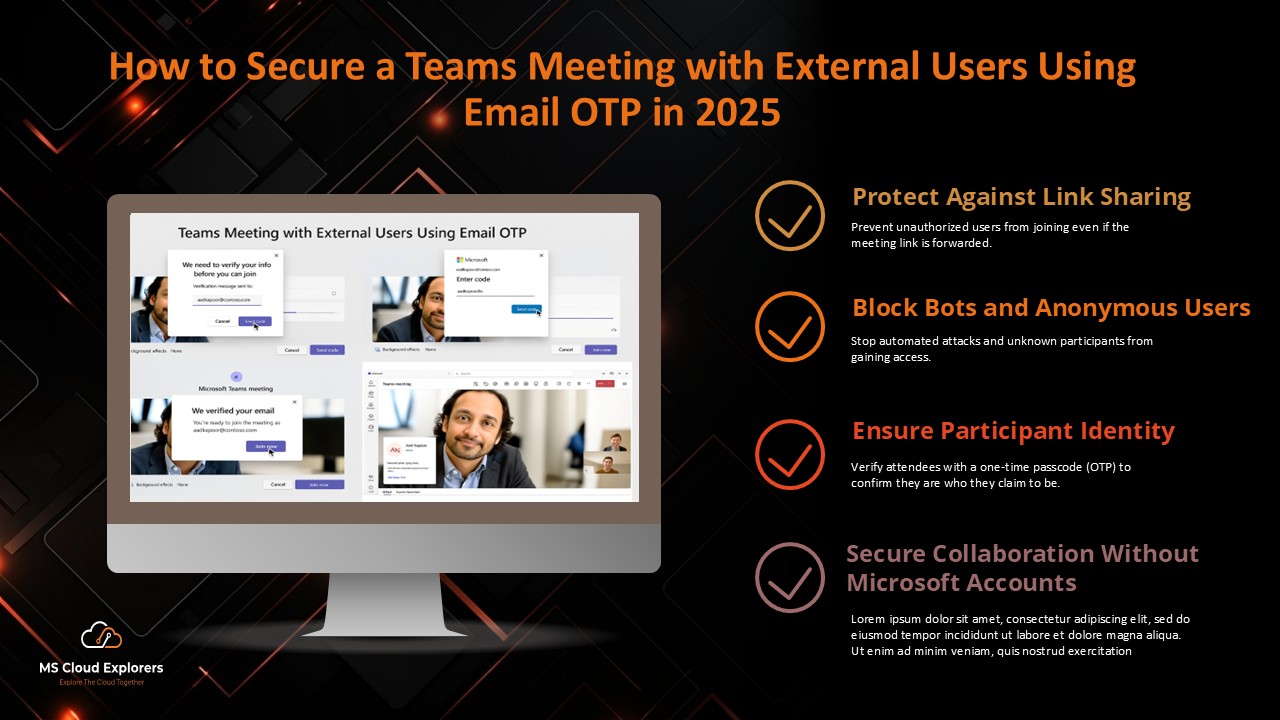
In a world where remote work is the new normal and communication has become more digital than ever, businesses are ditching traditional phone systems in favor of cloud-based solutions. That’s where the Microsoft Teams PSTN Call System comes in—a powerful tool that lets businesses manage voice calls directly within Teams using Microsoft PSTN calling plans.
Whether you’re a startup, a medium-sized firm, or a global enterprise, Teams PSTN calling transforms the way you communicate—with fewer wires, better scalability, and seamless integration into your Microsoft 365 environment.
Business Benefits of Microsoft PSTN Calling Plans
Cost Efficiency
Say goodbye to expensive on-premises PBX systems. With Microsoft’s cloud-based PSTN solution, you reduce overhead and maintenance costs while paying only for what you use.
Scalability and Flexibility
Need to add 5 users this week and 50 next month? No problem. Microsoft’s cloud telephony is built to scale with your business needs.
Security and Compliance Features
Microsoft 365’s built-in compliance controls, encryption, and identity management make your calling environment secure and compliant out of the box.
Enhanced User Experience
Unified collaboration in one place—chat, meetings, and calls all under Teams. No app switching, just streamlined productivity.
Understanding Microsoft PSTN Calling Plans
Types of Microsoft Calling Plans
Domestic Calling Plans
Perfect for companies with employees making calls within a specific country. Comes with a fixed number of minutes per user per month.
International Calling Plans
For organizations with a global presence. These plans include both domestic and international call minutes.
Licensing Requirements
To use Microsoft Calling Plans, users need:
- Microsoft Teams Phone Standard license
- Microsoft 365 or Office 365 license (like E1/E3/E5)
- A Calling Plan license (Domestic or International)
Setting Up the Microsoft Teams PSTN Call System
Prerequisites and Planning
Before setup, ensure:
- You have the correct licenses.
- Your users are synced in Azure AD.
- Phone numbers are available or ported.
Assigning Phone Numbers to Users
Assigning Directly in Teams Admin Center
- Go to Teams Admin Center
- Navigate to Voice > Phone Numbers


- Search the username and choose the Emergency Location (Make sure user has teams voice license assigned.)

- Click on ‘Apply’. The end user will receive an email with the assigned phone number. However, it may take up to 24 hours for the dial pad to become available for the end user.

PowerShell Method
For bulk assignments, PowerShell is your best friend.
Set-CsPhoneNumberAssignment -Identity user@domain.com -PhoneNumber +15551234567 -PhoneNumberType DirectRoutingManaging Microsoft Teams Auto Attendant
What is an Auto Attendant?
Auto Attendant answers incoming calls with pre-recorded messages and routes calls based on the caller’s input.
Creating an Auto Attendant in Teams
- Go to Voice > Auto Attendants
- Click + Add, enter name and settings
- Set business hours, greetings, and routing logic
Routing Options
- Operator
- Voicemail
- Directory Search
- Another Auto Attendant
Custom Greetings
Upload your own audio files or use text-to-speech for a professional touch.
Best Practices for Auto Attendants
- Keep greetings clear and concise
- Limit menu layers
- Always include an operator option

Check out the step-by-step guide on how to create Microsoft Teams Auto-Attendants
Creating and Managing Call Queues
Purpose of Call Queues
Call Queues hold calls when all agents are busy, then route them to the next available person.
Setting Up a Call Queue
- Go to Voice > Call Queues
- Create a new queue
- Add agents and configure call routing
Assigning Agents
Choose individual users or groups that will receive calls from the queue.
Custom Hold Music and Greetings
Personalize the caller experience with branded audio.
Analytics and Monitoring
Use Teams Admin Center and Call Quality Dashboard to monitor queue performance and agent response times.
Check out the step-by-step guide on how to create Microsoft Teams Call Queue
Integrating with Existing Phone Systems
Direct Routing vs Calling Plans
- Direct Routing lets you connect Teams to your own SBC (Session Border Controller)
- Calling Plans are managed by Microsoft, no extra infrastructure needed
When to Choose Which
- Direct Routing is ideal for complex setups or countries where calling plans are unavailable
- Calling Plans are better for simplicity and faster deployment
Troubleshooting and Support
Common Issues and Fixes
- No Audio? Check network ports and device settings
- Number Not Assigned? Ensure license is active and region supported
- Calls Dropping? Check QoS and call logs
Resources and Support Options
- Microsoft 365 Admin Center
- Tech Community forums
- FastTrack support (for eligible licenses)
Real-World Use Cases
Small Business Deployment
A 15-user company switched from analog phones to Teams PSTN—cut monthly costs by 40% and gained advanced call handling.
Enterprise-Level Integration
A global firm used Direct Routing with Teams to unify communications across 12 countries—improved collaboration and simplified support.
Future of PSTN in Microsoft Teams
AI and Call Intelligence
AI-powered transcriptions, real-time translation, and sentiment analysis are on the horizon.
Evolving Cloud Telephony
As more companies adopt hybrid and remote models, Microsoft continues to innovate with a modern, AI-first approach to calling.
Conclusion
The Microsoft Teams PSTN Call System is more than just a phone replacement—it’s a modern, flexible, secure communication hub built for the way we work today. With Microsoft PSTN calling plans, setting up users, auto attendants, and call queues is easier than ever.
Embrace the future of business telephony and give your team the tools they need to stay connected and productive—no matter where they are.
FAQs
1. What are Microsoft PSTN Calling Plans?
They’re cloud-based calling services that let users make and receive phone calls using Microsoft Teams without needing on-premises hardware.
2. Can I assign a number to a user without a license?
No, users need the appropriate Teams Phone and Calling Plan licenses to receive a number.
3. What’s the difference between Auto Attendant and Call Queue?
Auto Attendants route calls based on input; Call Queues hold and distribute calls to agents.
4. How do I monitor call performance in Teams?
Use the Call Quality Dashboard and Teams Admin Center to track usage and troubleshoot.
5. Do I need additional hardware for Microsoft PSTN Calling?
Not necessarily. All you need is a device with Teams installed. For Direct Routing, an SBC is required.
Stay updated on the latest in Microsoft 365, SharePoint, OneDrive, Teams, Intune, and more! Subscribe to our newsletter for exclusive insights and updates.


